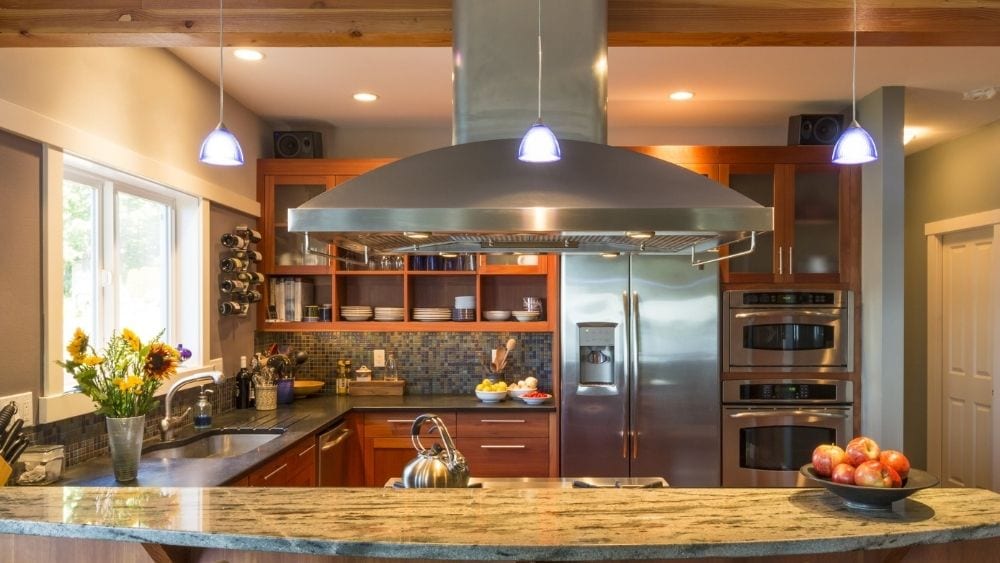Kitchen Lighting : How Much Is Too Much?
We break down how to maximize the lighting in your
kitchen and subsequent rooms…
In the wise words of Rod Serling “There is nothing in the dark that isn’t there
when the lights are on.” I think about this every time I stub my toe getting a midnight
snack. While his words are meant to be taken as more poetic and abstract, for the sake
of this article we’re going to take them literally in the terms of Kitchen Lighting.
Lighting is not only essential for, you know, vision, but is vital for every element
in any interior design. From establishing the mood and tone of the room, to creating
ambience and complimenting the room scheme, the right lighting has the potential to
make an otherwise ordinary space look beautiful. This and more is what makes Kitchen
Lighting unique compared to lighting other rooms, making it a critical step in your next
renovation/remodel project.
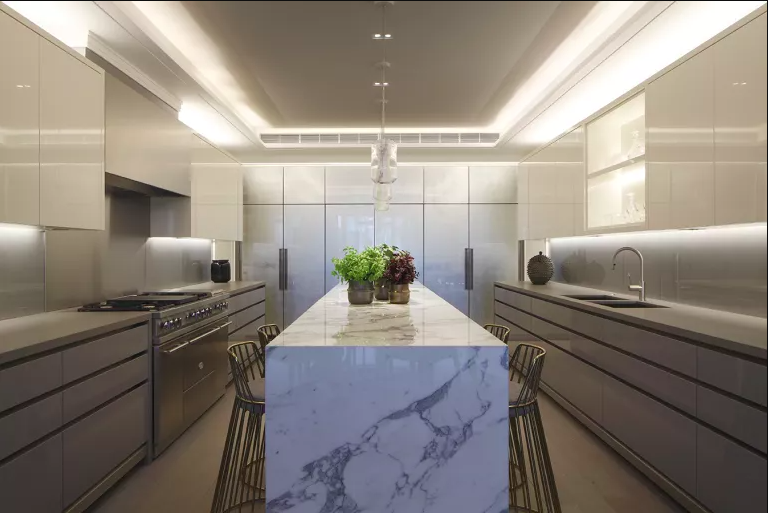
When it comes to kitchen ideas specifically, preparation and cooking need effective illumination for safe and efficient work areas, of course, but as a multifunctional space many other demands are made, so you may be asking how much & what kind of light does my kitchen need?
Types of Kitchen Lighting
Kitchen lighting falls into three broad categories: overhead lighting, support
lighting, and statement lights. And each of these types serves a different purpose.
Overhead Lighting:
Also known as ambient lighting, is usually the primary light source in a kitchen.
Often recessed into the ceiling and to maximize ambience it is suggested they are
placed 24 inches off the wall with 40 inches of space between each light. Recessed
lights are functional in nature but are also carry an aesthetic component. The vibrancy
of the lights completely affect the ambiance, We suggest installing wall-dimmers to control the look and feel to your kitchen. Being A kitchen is a multifunctional room,
from hosting and entertaining guests, to meal prepping and preparing self meals,
having wall dimmers allows you to set the mood for any occasion.


Support Lighting:
Also know as task lighting, these are the lights that assist you with specific
kitchen tasks such as chopping vegetables, cooking meals or making charcuterie
boards. They Illuminate countertops, usually by means of under cabinet lighting,
making the work area more functional. Fortunately most task lights, specifically under
cabinet lights, are usually LED’s making installation a breeze while aesthetically adding
a highlighting light source for your kitchen features.


Statement Lights:
Last but far from least there are statement lights (no nickname for these).
Statement lights are without a doubt the most exciting feature in the kitchens design
process. Statement lights allow you to really showcase your personal style and take
risks all while adding even more light to your kitchen! Usually the last lights to be
added after a kitchen has been efficiently lit, they are the only lights that should be
selected more for their aesthetic value than they are their functionally. Think hanging
pendant lights or kitchen island lighting, these lights have everything to do with your
taste and the theme you are going for in your kitchen so have fun with them!
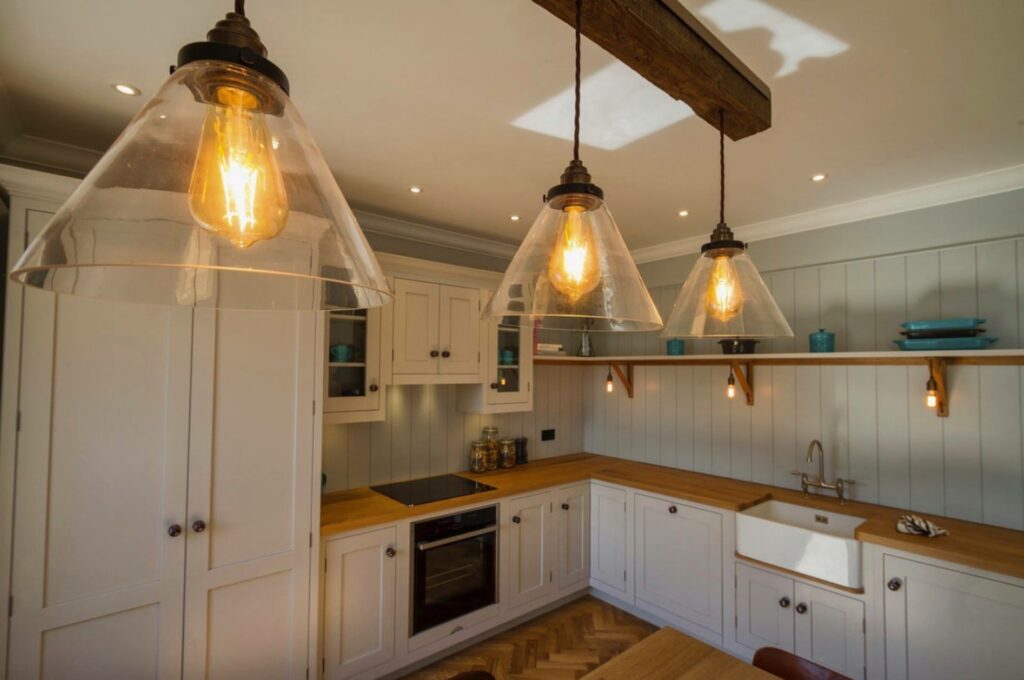

Natural Light:
With all this talk of artificial light we can’t forget to take into account the best
source of light we have, The Sun! Any opportunities that you have to bring more natural
light into your kitchen should be taken. Natural Light is excellent for everything from
functionally brightening a room to improving the mood of a space. But it’s particularly
useful in kitchens, where the average American spends the better part of one hour
everyday. Natural Light flooding a room is not only good ambiance but is also good for the well-being of the person standing in it.
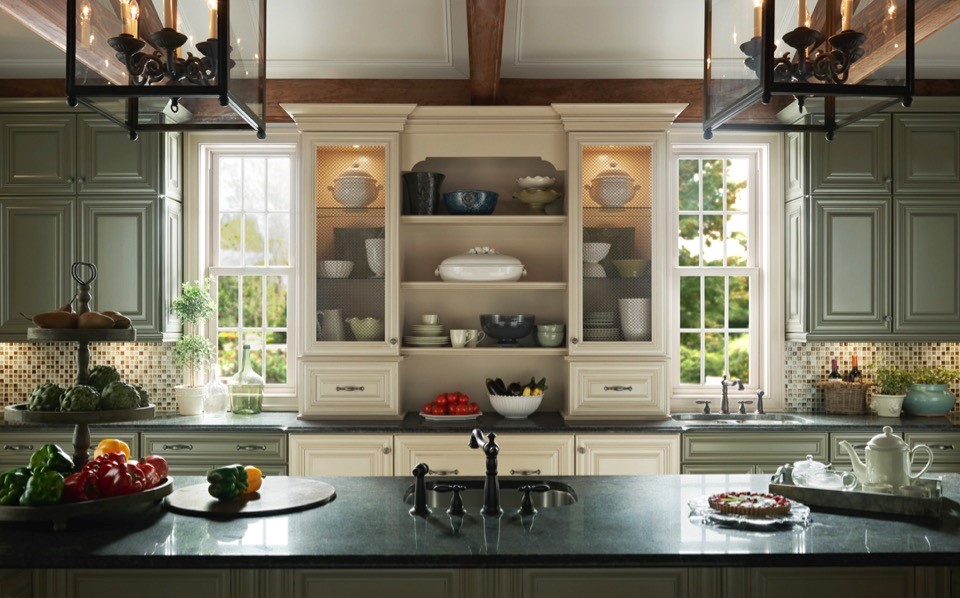

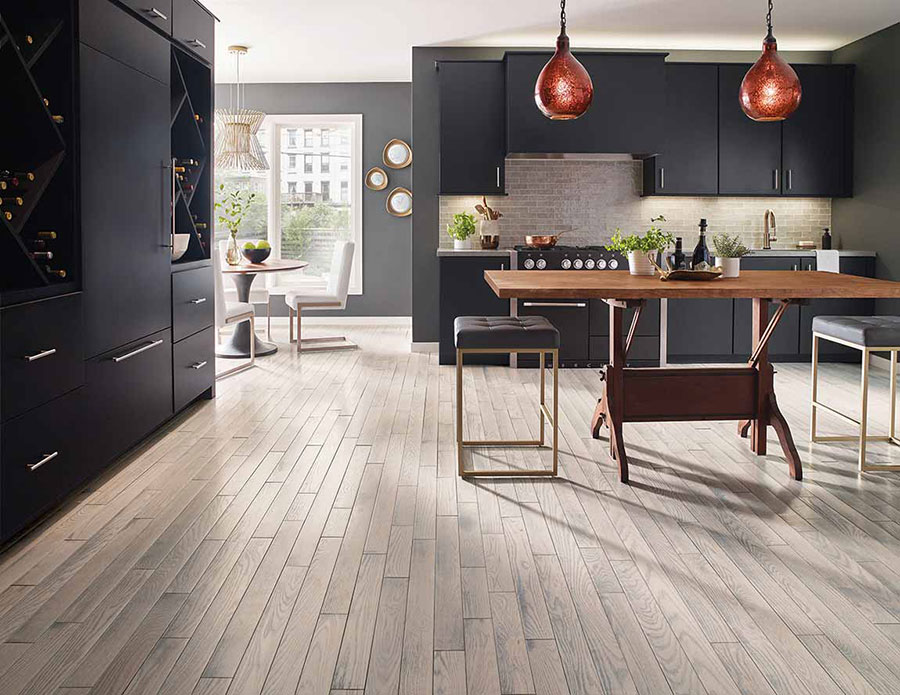

One last thing to take into consideration is the theme/color scheme of your
kitchens design. The light levels of your kitchen will be effected by the color scheme.
Darker color cabinets and countertops will absorb more and reflect less light back into
the room. If planning for a darker kitchen, consult your designer for adequate lighting
options to compensate.
In Conclusion…
How much lighting your kitchen needs can all be figured out when thinking in
these layers. Start with natural light and work your way down to ambiance, task, then
finally statement. Thinking in layers with your lighting will help you determine how much
is enough; too little and you’ll stub your day at mid-day while presenting a dark, cold
and unwelcoming kitchen, Too much and the mood of the room will be overwhelming
and blinding to you and any of your guests. And remember always focus on functionally first but most importantly have fun with it!

